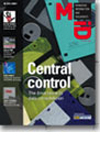
Cold Comfort
- Article 8 of 26
- M-iD, July 2004
Page 1 | Page 2 | Page 3 | Page 4 | All 4 Pages
For companies pursuing best-practice customer service, the ability to retrieve and view invoices, bills or statements while the customer is actually on the phone is a major goal.
The reason is simple: if a customer service representative has the document (or at least an electronic image of it) in front of them when responding to an enquiry, then the time it takes to complete that transaction is shortened. Customers can point out problems with the document to the employee and he or she will be able to see exactly what they're talking about. The customer is happier, retention rates improve, and ultimately, costs can be minimised.
Unfortunately, few organisations have that kind of document access in place. As a result, customer queries cannot be answered easily, leading to longer call times with customers and expensive call-backs. In many cases, the employee does not have permission to access the data that the customer is enquiring about and must request it from the IT department - a process that can take days.
How does COLD/ERM work?
On the face of it, computer output to laser disk (COLD) and enterprise report management (ERM) sound like two completely different things. Closer examination reveals the similarities between the two.
COLD involves capturing print streams in order to get a digital version of the printed form of a document - in effect, cutting out the step of scanning a printed document to get it into a system.
ERM involves the capturing, indexing, storing and retrieving of reports - another branch of document management. Yet in the context of ERM, the term 'report' refers to things such as invoices, bills, statements, credit notes and other records of transactions sent to customers, clients, and business partners.
In other words, it is only after they have been printed that they exist as a document that can be put into a document management system and handled, and then only once they have been put into a digital form. This means, without COLD there would be no ERM.
Similarly, time and technology have given a different meaning to COLD. Laser disk is rarely, if ever, the intended destination of a report, since far cheaper mass storage solutions, such as hard drives, RAID arrays, NAS and SANs, now exist that have better price points, storage capabilities and performance than optical disks.
Tape drives have also improved enough to exceed optical as a medium of greater reliability, performance and capacity.
Many organisations may instead prefer to output directly to an ECM, rather than any other storage medium, instantly creating documents for handling in an ERM system.
Page 1 | Page 2 | Page 3 | Page 4 | All 4 Pages

